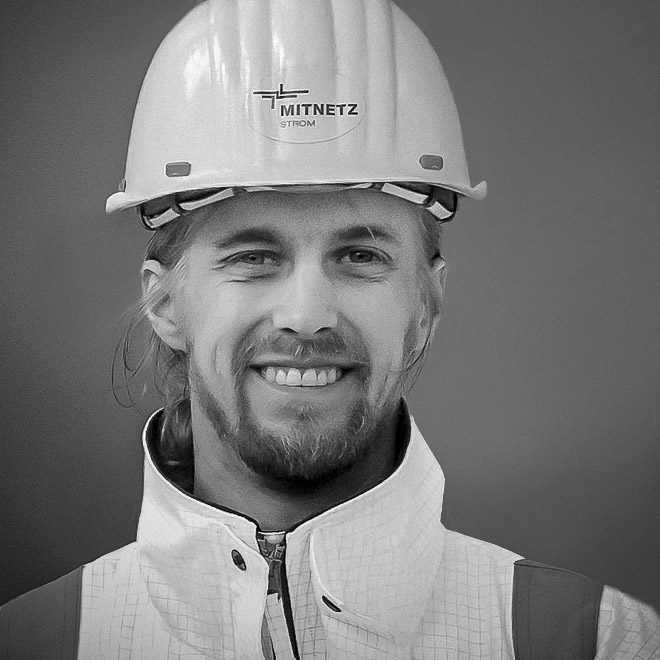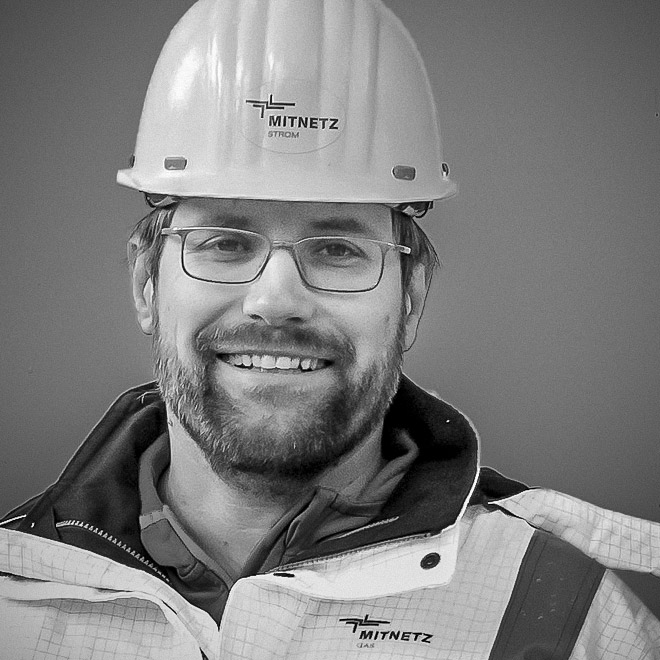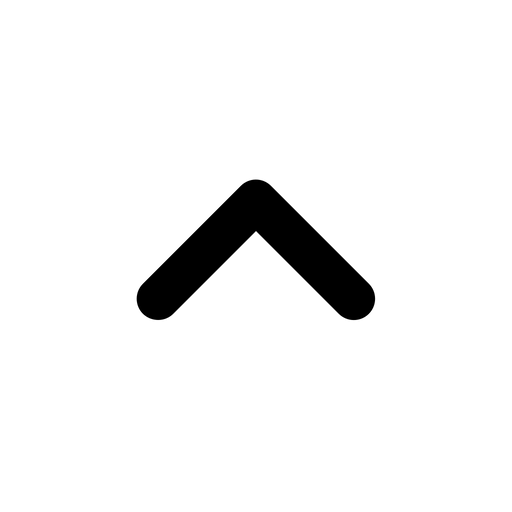Solar power is one of the pillars of the energy transition. But a large proportion of the installations will be found on roofs and facades, and thus in the local grids. In this interview, Jens Schwedler and Jan Schönfeld from the central German distribution grid operator MITNETZ STROM talk about the distribution grids of the future.
-
Impulses
- Impulses overview
-
Transformer manufacturers
- South America's champions of the energy transition
- Traction Transformers – Future on the Rail
- Time of the giants: XXL transformers for more power
- "Reinhausen is ready to deliver!"
- Oversized de-energized tap-changers
- The most powerful transformers in the world for a 1,100 kV HVDC line in China
- "We are in a growth market with the VRDT"
- Digitalization turnaround: GANZ Intelligent Solutions relies on cooperation with MR
- "Transitioning to a solution provider presents a major opportunity for transformer manufacturers – and digitalization can help!"
-
Digitalization
- How AI can lend a hand
- myReinhausen: MR's central digital customer platform
- Why data centers (may) never fail
- Automation? (Cyber-) Secure!
- Globally unique: MESSKO® MTRAB® dehydrating breather communicates via cell phone app
- Remote Solutions: Professional help from a distance
- "Digitalization of the power grids will only work with comprehensive security measures"
- Why are you digitizing your transformers? Three questions for Rúnar Svavar Svavarsson.
- Six challenges, six solutions – Intelligent sensors for safe transformers
-
Energy transition
- The VRDT is the ideal solution to solve voltage problems in our distribution grids
- Making transformers more sustainable
- 940 tons of power regulation
- Sunny prospects: Municipal solar storage devices
- Four reasons why regulated distribution grids are the future
- "The energy transition is taking place in the distribution grids"
- Five theses on the future of power grids
- Storage at all network levels
- Test systems for the energy revolution
- Climate change, energy revolution and the future of power grids?
- A new design for utility poles
-
Wind and solar power
- The North Sea as Europe's green power plant
- Sahara electricity - safe for the island
- Are wind farms the new power plants?
- Direct current at all grid levels
- The MSCDN plant – the new "power plant generator" for stable grids
- Clean power grid with high-frequency filters
- Weatherproof cable testing for offshore wind parks
- VRDTs for Australia's distribution grids
- Lifetime optimization
- Power supply in industry
- Globalization
- Impulses overview
-
Transformer manufacturers
- South America's champions of the energy transition
- Traction Transformers – Future on the Rail
- Time of the giants: XXL transformers for more power
- "Reinhausen is ready to deliver!"
- Oversized de-energized tap-changers
- The most powerful transformers in the world for a 1,100 kV HVDC line in China
- "We are in a growth market with the VRDT"
- Digitalization turnaround: GANZ Intelligent Solutions relies on cooperation with MR
- "Transitioning to a solution provider presents a major opportunity for transformer manufacturers – and digitalization can help!"
-
Digitalization
- How AI can lend a hand
- myReinhausen: MR's central digital customer platform
- Why data centers (may) never fail
- Automation? (Cyber-) Secure!
- Globally unique: MESSKO® MTRAB® dehydrating breather communicates via cell phone app
- Remote Solutions: Professional help from a distance
- "Digitalization of the power grids will only work with comprehensive security measures"
- Why are you digitizing your transformers? Three questions for Rúnar Svavar Svavarsson.
- Six challenges, six solutions – Intelligent sensors for safe transformers
-
Energy transition
- The VRDT is the ideal solution to solve voltage problems in our distribution grids
- Making transformers more sustainable
- 940 tons of power regulation
- Sunny prospects: Municipal solar storage devices
- Four reasons why regulated distribution grids are the future
- "The energy transition is taking place in the distribution grids"
- Five theses on the future of power grids
- Storage at all network levels
- Test systems for the energy revolution
- Climate change, energy revolution and the future of power grids?
- A new design for utility poles
-
Wind and solar power
- The North Sea as Europe's green power plant
- Sahara electricity - safe for the island
- Are wind farms the new power plants?
- Direct current at all grid levels
- The MSCDN plant – the new "power plant generator" for stable grids
- Clean power grid with high-frequency filters
- Weatherproof cable testing for offshore wind parks
- VRDTs for Australia's distribution grids
-
Lifetime optimization
-
Power supply in industry
-
Globalization
Impulses - Portfolio
-
Career
Career
-
Company
Company
"The energy transition is taking place in the distribution grids"
The energy transition has a major impact on the distribution grids. More than 90 percent of green electricity producers feed into them. A German research project is determining what distribution grids of the future will look like.
"The energy transition is taking place in the distribution grids"
The energy transition has a major impact on the distribution grids. More than 90 percent of green electricity producers feed into them. A German research project is determining what distribution grids of the future will look like.
What are the biggest challenges in operating local networks?
SCHÖNFELD: We have a total of 55,000 renewable energy plants in our distribution grids. This means that almost 20 percent more energy is produced than our customers consume. : As a consequence, we tend to be dealing with an overload of the distribution grids and a load flow reversal.
SCHWEDLER: At the same time, we are also seeing massive changes on the consumer side, especially through the electrification of the heating and mobility sectors. The growth rates in the charging infrastructure for electric mobility are enormous. This leads to drastic fluctuations between generation and consumption. The actual energy transition is therefore taking place to a large extent in the distribution grids.

„We are dealing with distribution grid congestion and load flow reversal“
Jan Schönfeld, MITNETZ STROM
What does this mean for you as a network operator?
SCHÖNFELD: The grids are generally not designed for this. Both the generation peaks and the consumption peaks are causing us problems because they fall apart in time.
What effects does this have on the power quality?
SCHWEDLER: Every feeder and every load influences the power quality – at all grid levels. These are influences that are often very far away from our customers' sockets. But we still have to guarantee a quality standard. Especially at long network spurs, this leads to an irregular voltage pattern. Asymmetrical loads and harmonics are further negative effects.
How do you react to this?
SCHÖNFELD: One possibility would be to react to this by expanding the classic operating equipment: new cables, new transformers. But that would not be very efficient.
SCHWEDLER: We are looking for more intelligent solutions than building up excess capacities and have launched the Flexnet-EkO project together with Reinhausen. Here, together with the Technical University of Dresden and Mittweida University of Applied Sciences, we are researching how converter and storage technology from Reinhausen can be used for this purpose.

„With Reinhausen technology we can always supply our customers with clean power quality“
Jens Schwedler, MITNETZ STROM
What are the concrete advantages of Reinhausen technology?
SCHWEDLER: The local grid is decoupled. This means that the voltage is no longer generated somewhere in the power plant, but we reproduce the three-phase system with a very clean sinusoidal voltage curve with the help of semiconductor technology. All negative influences from the high and medium voltage levels are thus eliminated. The converter also offers us a whole range of control options. We can compensate for harmonics and always deliver clean power quality to the customer. With the battery storage units, we can buffer peaks and thus balance demand and supply within the distribution grid and reduce repercussions on the upstream medium-voltage level. In addition, semiconductor technology gives us the ability to transmit signals.
What are these signals and how do you use them?
SCHÖNFELD: With the converters, we not only completely rebuild the network frequency, but we can also vary the frequency in the range of 10 millihertz. This is not noticeable to the customer. But we can control consumers and generators with this frequency. If the local grid produces more solar power than it consumes and can't feed it into the upstream grid either, we charge the battery storage and release heat pumps and charging stations.
SCHWEDLER: The vision is that we will be able to control the load flow within the distribution grids and balance supply and demand in this way, so that expensive redispatch measures will no longer be necessary in the first place.
FlexNet-EkO
Increasing the flexibility of grid operation through decoupled local grids. One of the current major questions is how to best coordinate flexible consumers and generators in a local grid, while at the same time ensuring optimum power quality, relieving the existing operating resources and ensuring or even increasing supply security. This is precisely the question that MITNETZ STROM, Mittweida University of Applied Sciences, Dresden Technical University and Reinhausen are investigating as part of the research project funded by the German Federal Ministry for Economic Affairs and Energy.
FlexNet-EkO pursues these goals:
- Highly reliable supply of the local network with high power quality
- Test of the new operating device network coupling in the network
- Test of the control of decentralized consumers and generators by means of frequency modulation
- Development of planning and operating criteria for modular networks
More about this topic can be found in our magazine ONLOAD:

We are here for you. Wherever you are.
Looking for the right contact partner?
Do you have a concern, but don't know whom you should contact? You will find that information in our contact overview. In the event of any technical disturbances, our 24/7 support is always at your disposal.
Welcome to myReinhausen
myReinhausen is MR's central, digital customer platform. On myReinhausen, customers can access customer-specific MR information as well as numerous free features related to the MR portfolio.
myReinhausenJoin Reinhausen family
Find your ideal job quickly!
Check our vacancies here. Apply today and contribute at the world market leader in energy technology keeping the energy supply stable in the future.
